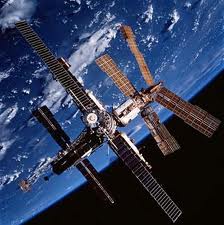The lectures at the Chaos Computer Camp, taking place August 13-17 in Mildenberg, Germany, are being streamed live to the web.

Mike Ossmann AD0NR – Image Credit http://www.insinuator.net
Among the attendees is radio amateur Michael Ossmann, AD0NR, who was guest speaker at the 2015 Dayton Hamvention AMSAT / TAPR banquet.
The founder of Great Scott Gadgets he grew up as a computer nerd embracing the hacker ethos. Eventually Michael became very interested in the security of wireless systems such as a remote keyless entry, a garage door opener, Wi-Fi, and Bluetooth. He designed Ubertooth One, a Bluetooth sniffer that was successfully funded on Kickstarter.
Not one to rest, Michael later designed and successfully funded HackRF One, an open source SDR platform that attracted the attention of the amateur radio community.
The @rad1obadge issued to Chaos Computer Camp attendees is a full-featured 50-4000 MHz SDR Transceiver with an output power of 5-7 dBm.
It is based on a Wimax Transceiver which sends I/Q samples in the range of 2.3 to 2.7 GHz to an ARM Cortex M4 CPU.
The CPU can then process the samples stand alone for various applications (like FM receiving, Spectrogram display, RF Controlled power plugs, etc.) or send the samples via USB 2.0 to a Computer where they can be processed with the help of GNU Radio.
The extended frequency range is provided by a mixer that can be inserted into the RF path. For immediate usage, the board contains a 2.5 GHz chip antenna which can be replaced with an easily soldered Antenna connector for usage in different frequency ranges. The rad1o also contains an LCD and Joystick as did the r0ket from the last CCCamp.
A talk given on Thursday evening, August 13, covered the inception and creation of this year’s Rad1o Camp Badge. From a description of the hardware including differences to the HackRF one, the software concept and extension possibilities to first projects done by attendees. Michael Ossmann AD0NR makes a guest appearance towards the end of the video.
Watch the @rad1obadge 50-4000 MHz SDR Transceiver talk
https://media.ccc.de/browse/conferences/camp2015/camp2015-6884-the_rad1o.html
Watch the @SatNOGS Open Source Satellite Ground Station Network talk
https://media.ccc.de/browse/conferences/camp2015/camp2015-6926-satellite_open_ground_station_network.html
Chaos Computer Camp 2015 https://events.ccc.de/camp/2015/wiki/Main_Page
Live Streaming https://streaming.media.ccc.de/
Recordings are at https://media.ccc.de/browse/conferences/camp2015/
Schedule https://events.ccc.de/camp/2015/Fahrplan/
Watch the talk Adventures of a Hacker Turned Radio Ham which Michael gave at the AMSAT-TAPR Banquet at Dayton in May 2015.
In it he talks about his unique perspective on the community as an outsider looking in, why he resisted getting an amateur radio license for years, and why he finally decided to join.
Michael shares his thoughts on what it means to be a hacker, what it means to be a ham, and what amateur radio may look like in the decades to come
https://amsat-uk.org/2015/07/12/tapr-amsat-2015-talks/
Michael Ossmann AD0NR on Twitter https://twitter.com/michaelossmann










You must be logged in to post a comment.